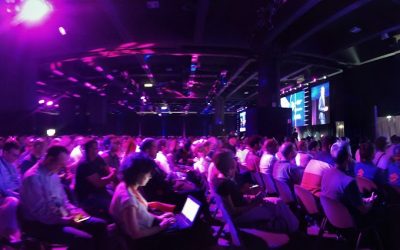The user and his/her needs at the center of the system. Since the Smart Meter is pushing for evolution in utilities, starting from the energy sector and expanding to gas and water suppliers, we’ll try to explain what it is and what it’s used for.
New opportunities within the business sector, mean new prospects that require renewed efforts in order to be competitive. Consequently, the companies that offer high-end technologies, helping with the development of Smart Grids, must create a multi-utility, flexible monitoring framework, based on systems that integrate a multitude of providers.
In addition, in order to provide more freedom to users that have become more aware of their energy consumption levels and that have renewed their participation in order to save more energy, companies will have to provide hardware and software devices able to interact directly with the user. A new business concept that involves both private citizen and business companies, allowing them to access energy consumption levels directly from a PC, Smartphone and Tablet.
WHAT IS A SMART METER?
Recently, the active participation of consumers within the energetic market has seen a notable increase, transforming the customers’ priorities into a key aspect that needs to be at the center of the ongoing development of a smart network. How to keep the communication flowing? The solution is called Smart Meter. Lower costs based on real consumption levels, allowing users to know their consumption of gas, energy and water precisely. In addition, the Smart Meter allows to manage waste levels in a very easy way.
The Smart Meter is that tool that, inside Smart Grids, guarantees a constant communication between consumers and utilities. A useful system that allows companies to directly contact the customer and, to the latter, to send directly to the energy suppliers readings and data linked to their domestic appliances.
A Smart Meter is different from traditional meters because of its ability to register consumption levels at regular intervals, send information to both suppliers and consumers, and help with monitoring energy waste levels in order to create an almost real-time invoice procedure.
A single piece of equipment composed of different control devices: sensors to identify parameters and communication devices used to transfer data and control signals. Additionally, other problems that might happen during the energy consumption monitoring procedures, connected to the load or performance on the network itself, will be solved inside smart distribution networks.
But it doesn’t stop there. With the integration of devices inside systems managing domestic energy consumption – Home Energy Management Systems – the Smart Meter will provide, through communication protocols, information related to energy fluxes and costs.
WHAT ABOUT SMART METERING?
When we’re talking about data and information monitoring activities, we’re talking about Smart Metering. An intelligent system that collects information from the meter (be it a home or a company one), using digital technologies to generate, elaborate and use those data.
This “Smart Metering” uses survey and control tools that thanks to an Internet connection (or IoT, if you prefer) can interact with one another to improve efficiency and transfer the acquired data in real-time. The result means a quick and precise management of the information.
THE ADVANTAGES OF THE SMART METER
More precise energy consumption levels evaluations and an awareness on how much the bill is going to be. Everyone on us, thanks to the Smart Meter and its sensors, will be able to constantly monitor the consumption levels.
Here’s the full list, but then get too surprised by all the advantages (we told you there’d be many):
- A decrease for reading costs and also for contract management (e.g. supplier switch, termination of contract etc.) which are made automatically, more frequently and without the need to have an operator there to help you;
- A drive for energy efficiency and for a more rational use of resources;
- Better network management and an improved identification of technical and commercial losses;
- The user is truly at the center of the process, within the context of smart network management.
MULTI-UTILITY PLATFORMS
Different services within the same architecture, this i show multi-utility platforms are gaining ground. Until very recently, the utility sector aimed at companies that would manage different services (power, gas or water) in different ways. As of today, possibilities have changed and now a conscious client, coupled together with smart technologies like the Smart Meter, Big Data or IoT, requires a different type of system. That’s why it’s important to have an horizontal characterization that unites in one single frame, different services, almost as an identity made of more than a single element. With this kind of integration, utilities can: collect data on users’ consumption levels, understand their behaviors, address the issue and discuss it directly with the user to create a custom-made service.
This new type of platform is based on Smart Metering, which allows for the aforementioned collection of data. However, in order to do that, some characteristics must be standard:
- A multi-service approach;
- Smart meters have to be used for electrical power, gas, water heating systems;
- They must include a building data concentrator, that is a conjunction between AMR (Automatic Meter Reading) and AMI (Advanced Metering Infrastructure);
- Use the NIALM technique (Non-Intrusive Appliances Load Monitoring) to analyze customer behavior;
- Include data-analysis tools;
- Have a software infrastructure that can collect miscellaneous data.
As you can see in the infographic above, there needs to be a complex multi-layered architecture, in order to join together all different aspects. This is formed by seven different levels:
- Integration layer – allows operation among heterogeneous devices, ridding itself os a certain technology by using web services/building data integrators;
- Machine to machine layer – allows the transferring of data between systems and improves their scalability option;
- Storage layer – collects data from Smart Meters and IoT devices;
- Application layer – a set of APIs and applications to manage the information coming from the previous layer;
- Security layer – oversees the devices’ and services’ security status;
- NIALM platform – used to outline the consumers’ energy consumption behaviors.
EMS: THE INTEGRATION OF THE END-USER INSIDE A SMART GRID
Speed. Thanks to the incredible developments made by information technology and communication, the energy management inside Smart Grid has been transformed. Energy Management Systems have been strategically positioned inside the consumer’s sphere of the Smart Grid. This means that domestic appliances (like air conditioners, dishwashers, dryers, fridges, burners and washing machines) provided with a smart meter can be monitored and controlled to improve power source wastes. The future is here!
A new branch of advanced measurement infrastructures have emerged, which can now monitor the use of electrical power in real-time.
Utility suppliers can now have a bidirectional communication with the end-users and can measure the power consumption data in detail, whilst encouraging consumers to improve their energy waste behaviors. This is where HEMS – Home Energy Management System – comes into play. Thanks to this technology, users can keep track of the energy consumption levels with different available services, in order to control reduce the waste of resources.
Summing up: data on energy consumption levels, registered by the user’s Smart Meter can be monitored through an Energy Management System – EMS – and can be accessed, in a user-friendly format, directly on home PCs or even on cellphones. Therefore, the user is guaranteed to save money thanks to the EMS and it’s detailed data on energy consumption levels. To better explain the concept we can say that: with the use of an EMS the user can verify in real-time what appliances have a low-energy or high-energy impact. In addition, the user can directly access the information using a PC, tablet or smartphone, and can see the energy consumption levels grow or decrease, by simply turning the appliances on and off.



